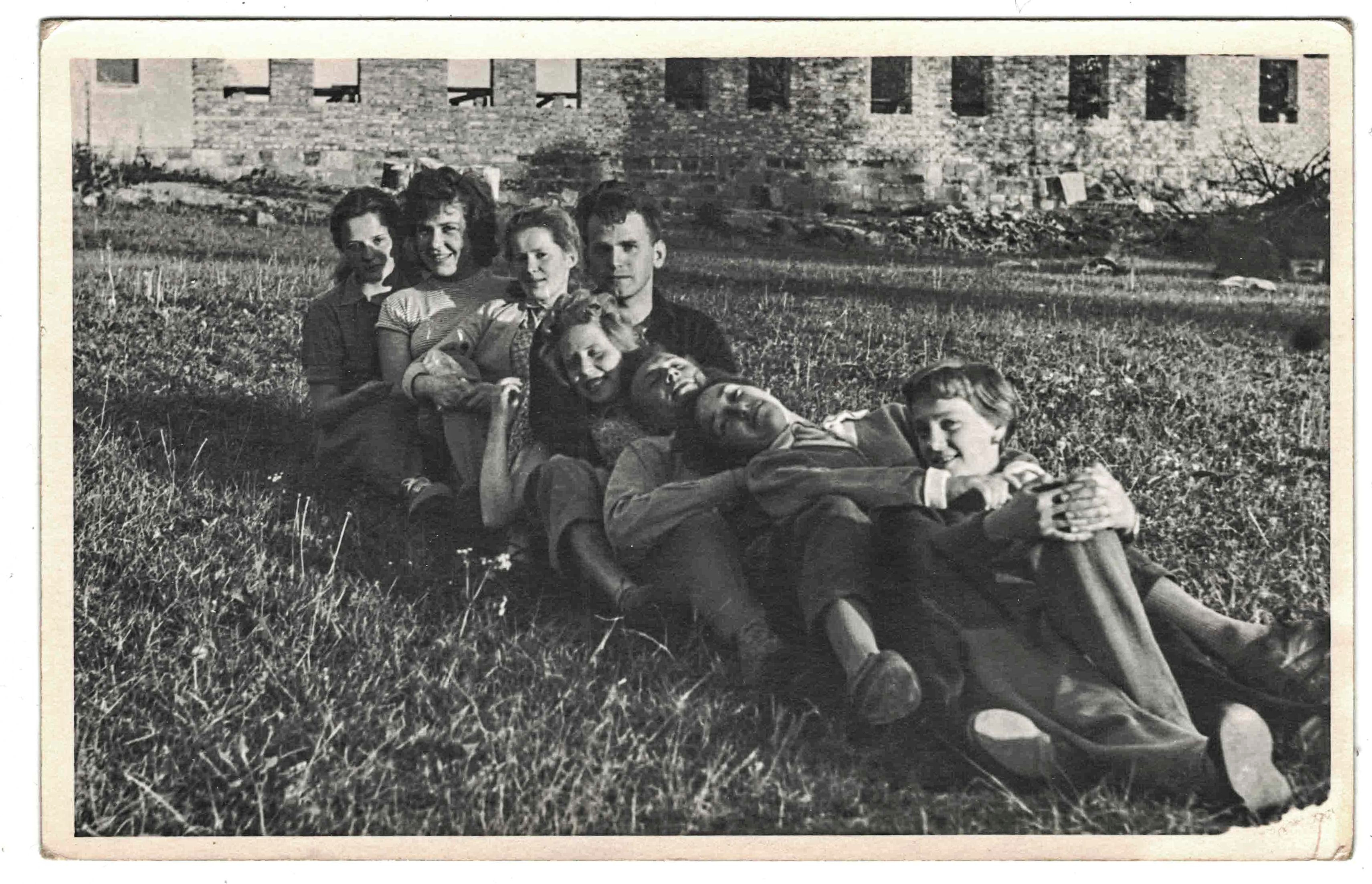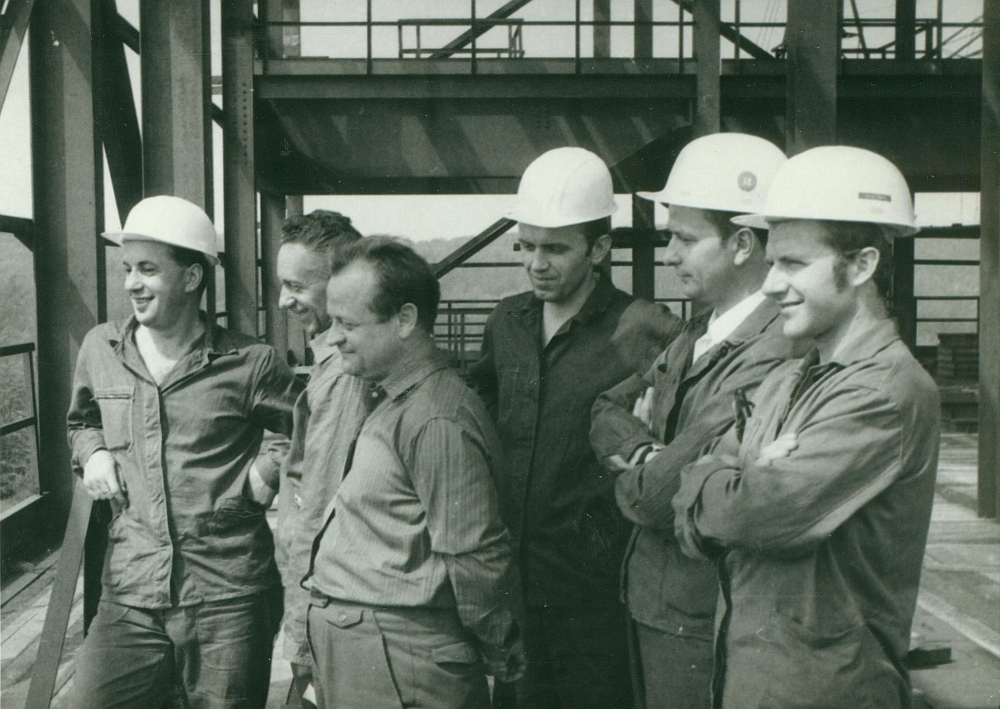If you understand Czech and are interested in Czech cuisine and historic culinary secrets you will want to look up the popular internet series Zmlsané dějiny co-hosted by historian Martin Franc. Franc, who teaches at Charles University and also works at the Masaryk Institute and Archive of the Czech Academy of Science, delights in debunking common myths but also giving credit where it is due. Food is not his only focus (he is also an expert on everyday life and consumer society during the communist period), but food is what we began talking about first in our recent interview.

Franc connection: The historian is at home in radio and TV, sometimes featuring as a guest and also co-hosting his own series.
How did the internet series come together?
The series was the brainchild of the highly respected chef Roman Vaněk who is a well-known Czech personality, who has authored many cookbooks and heads a prestigious cooking school in Prague where they teach both professionals and members of the public. We used to have a show together on the public broadcaster Czech Radio, where we looked at culinary history based on historic menus he has in his collection. The aim of this series is similar: to look at different aspects of Czech culinary history.
The key, it seems, is to have a format that is both educational and entertaining.
Absolutely. We always aimed for this show, and the ones before it, to be for a regular audience. We wanted to look at all kinds of gastronomical questions and to tackle some common myths about Czech cuisine. For it to be successful, it has to be interesting.
 Your handle or nickname in the show is Docent Jídlo [Editor’s note: In English, he would be Professor Food although “docent” technically means associate professor]. Do fans recognise you on the street?
Your handle or nickname in the show is Docent Jídlo [Editor’s note: In English, he would be Professor Food although “docent” technically means associate professor]. Do fans recognise you on the street?
(laughs) No, no, no, doesn’t happen. What does happen is that I get many emails from people asking questions about food history and that is something I enjoy. I appreciate the questions and being able to respond.
The series comes in several versions – there is a lite version as well, a shorter format for when viewers are on the go. For example, the goulash episode.
Goulash is an interesting dish because it is steeped in all kinds of misinformation: there is a misconception that the dish is steeped in time, going all the way back to the Middle Ages. But in order for it to be goulash as we understand it, it required a key ingredient first: paprika. And paprika was unknown in Europe before the discovery of America.
Goulash is also a very popular traditional dish in the Czech Republic, served at restaurants and at home, so people consider it a Czech specialty. But goulash is Hungarian. On the other hand, Czechs contributed to its popularity here and in Central Europe, playing a very important role: the first recipe for goulash as we know it here, as our neighbours know it, was published in 1819 in the Hospodářská pražská kuchařka cookbook in Czech and German editions. The latter edition was the first-ever recipe for goulash in German and consequently it spread to other German-speaking countries. The fact is we had a big impact on goulash as it is served in Central Europe. By comparison, Hungarian goulash is considerably spicier.
The invention of national cuisine
.
Is there such a thing as a quintessential national dish? A Czech national dish?
I am not a fan of the concept: recipes spread very quickly and cuisine is not something that is set in stone, unchanging. Cuisine is something that is constantly evolving. In the Middle Ages or after the 15th century, the Czech national dish would have been peas. In the 19th century, it was carp in black sauce and roast goose. Later still, plum dumplings were considered the Czech national dish and it was only at the end of the 19th century that roast pork with dumplings and sauerkraut symbolically took the crown. There is of course nothing wrong with a nation considering a particular recipe or dish its own, that is a part of cultural identity. What is problematic is trying to draw a line and saying it is solely ours. That’s just not how it is.
You touched upon this in an interview with Czech Radio, where you discussed national cuisine as “a construct”. An historic construct built to boost identity as well as to promote emerging tourism…
That’s right: the second half of the 19th century was one of national awakening and nationalism and all parts of the national culture, including gastronomy, were affected. That is hardly true of only us: the Hungarians had it with their food specialties, the Austrians, the same is true of Scandinavia. In short, it was a common process throughout Europe. And one reason why plum dumplings, which were far closer to an authentic Czech food or recipe than anything else, failed to remain at the top of the list, is because they are harder to prepare – which is riskier in restaurants – and mainly because you can’t eat them together with beer. So plum dumplings were basically dethroned: any visitor from abroad wanting to try the Czech national dish needed something they could wash down with a great mug of beer and that was roast pork – knedlo vepřo zelo.
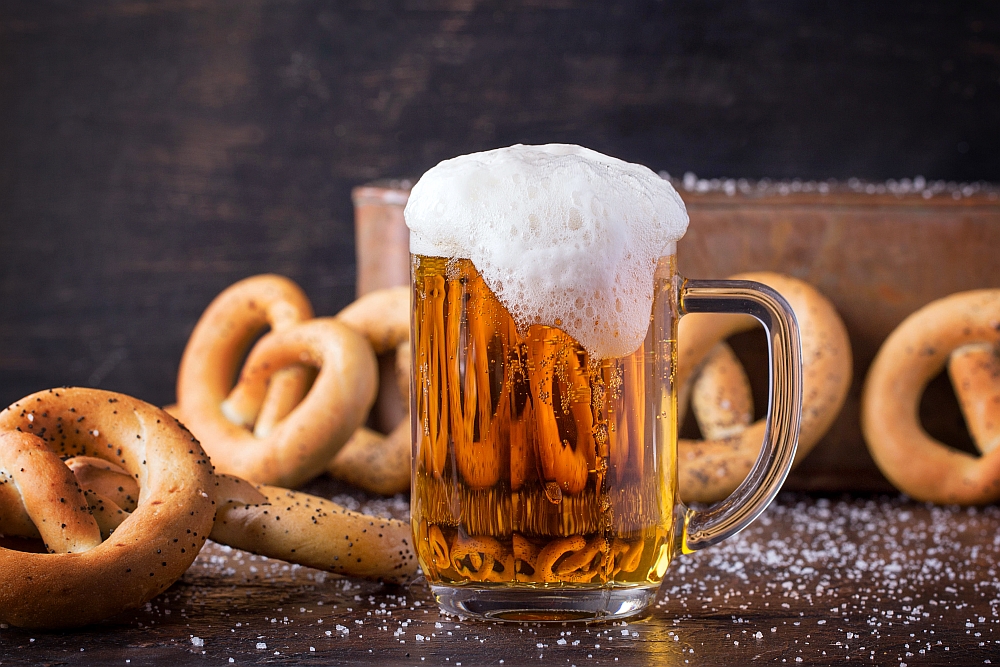
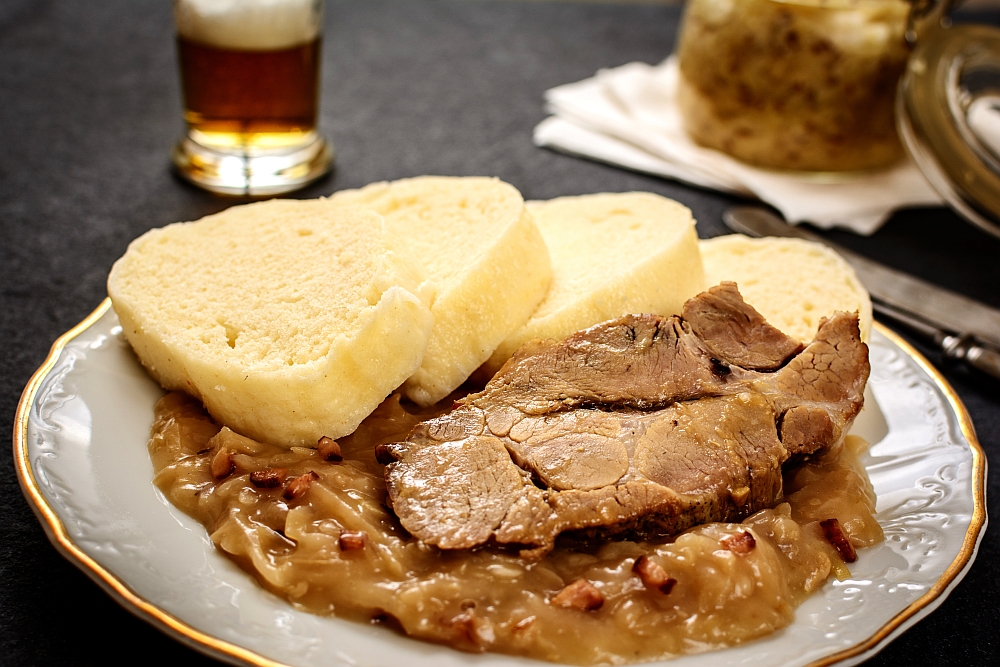
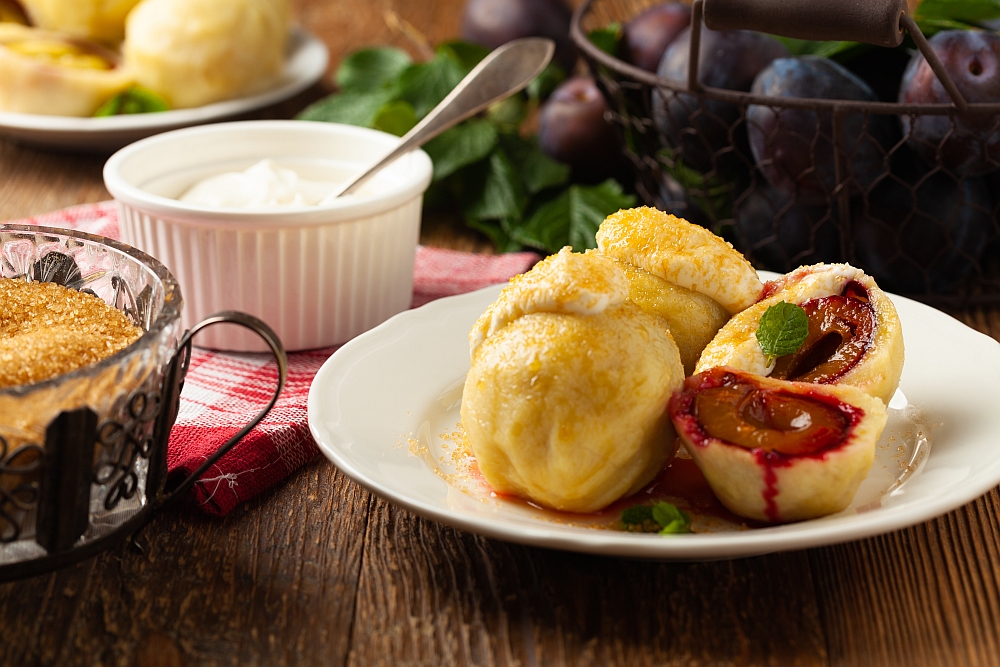
Where would Czech cuisine be without beer? Best of the best: Pork and dumplings with sauerkraut. For those with a sweet tooth: plum dumplings.
You are an expert on the communist period in Czechoslovakia; I read many times in the past that Czech cuisine suffered greatly under communism for a variety of reasons. What were the most prominent?
I think there were two major problems in terms of culinary development: one was significant limits in the availability of different ingredients and the other, which is related, was the dominance of isolationism, especially in the 1950s [Editor’s Note: one of the darkest periods in Czech history thanks to Stalinism]. Under communism, there was no appetite for recipes and impulses from abroad. Today, the situation is incomparable and the availability of goods and openness to trends is night and day. At the same time, when it comes to traditional cuisine, views are conservative and less likely to change.
In Czechoslovakia, impulses were missing and we didn’t even really have Asian cuisine. There was one famous Chinese restaurant in Voďičková Street in Prague but no ordinary person had a chance of trying authentic Chinese, or Vietnamese or Thai cuisine then. In terms of international cuisine after 1989, we suddenly saw much more Italian food, Asian food – those impulses have had an impact and changed how we look at cuisine and what we eat. Some trends have been less welcome – maybe there has been too much emphasis on pre-cooked foods or fast food – which suffer in terms of taste from a culinary perspective.

As "Professor Food", Franc enjoys joking around. Including in our photo set/collage by Vladimír Šigut.
Do you have a preference when it comes to Czech cuisine?
I had to think about this question a lot: dumplings aren’t really my thing. I like classic regional foods here such as bramborák (potato pancakes), vdolky (similar to muffins), or pancakes. What I despise are legumes of any kind – so historic Czech peas wouldn’t have been for me!
Fried cheese mystery
As an historian, are there any “holy grails” you are chasing? Lost recipes or otherwise?
One of the big topics now is the origin of breaded fried cheese or smažený sýr. That is something that became popular long after WWII and is seen as also being typically Czech. It is a meal closely tied to the communist period from 1948 – 1989, with all the decisions the communists took about foodstuffs and gastronomy from importing, pricing, and nourishment. There were two reasons it was always popular: one, it was pre-prepared, so even unskilled restaurant personnel could make it without messing up and second, it was quick and fast to make even at home. The ingredients were also cheap, as under communism, the dairy industry was heavily subsidised. Fried cheese was considerably cheaper than pork wiener schnitzel.
One aspect I came across fairly recently, a third impulse behind its popularity, was a drive in the first half of the 1960s - when there were meat shortages in Czechoslovakia – for non-meat alternatives. At the time, restaurants had to have meat-free days once a week and that boosted the popularity of fried cheese. It went from being a starter to the main course.
Consumerism in socialist Czechoslovakia
Besides being a food historian you have researched the period from 1948-1989, focusing on the ordinary or ”everyday”. How people lived, how they spent their time. How do people respond, given that many lived through the period themselves?
A lot of people feel that because they lived through it, there is little reason to study the recent past. It’s a common reaction and a common sentiment I have to fight myself. The feeling that because you experienced it, you still remember exactly how things were. But that is far from the case: even then, we all lived in different bubbles and had a different range of experiences, some shared, others not. There were social, regional differences that played a role. So that feeling is misleading.
I’ll give you an example: colleagues and I were trying to remember which exotic fruits were available in communist Czechoslovakia during the Christmas period. And we couldn’t reach a consensus. My colleague from Kladno, near Prague, maintained that some Christmases you could get fresh pineapples. Another friend who was with us from a small town called Hořovice said that had never been the case at their village. His grandma had headed the single local fruit and vegetable concession and he said that if even a single pineapple had ever arrived he would have known about because they would have had it at home! (laughs). So everybody’s picture of the past is different, in this case about supplies and supply chains then. The past has to be studied carefully to strive for a more objective and more complete view, so important details aren’t overlooked.
You have written about consumer society under communism: in what ways was it different from western Europe and in which ways was it similar?
I’ll start with how they were similar: the desire for consumption among a segment of society was the same. The number of people who were less consumer-oriented was not significantly greater in communist Czechoslovakia than in the West. The big difference was the gulf in purchasing power. It was was far greater in western countries. There were also major differences when it came to supply and demand. Here, demand was often unmet. In the West, demand would drive supply, leading to increases in manufacturing; under communism, where prices were fixed or centrally set, this led to deformations in consumer society.
For example, status symbols weren’t necessarily expensive things, just things that were hard or impossible to get. Having those items didn’t necessarily mean you were rich but it did mean that you were well-connected. If we come back to food, take liver. Liver wasn’t expensive but getting liver was impossible. You had to know the right person.
When it came to industry, there the market was deformed as well: it was a given that when you bought an item, say, a car, you wouldn’t buy another for many, many years. Cars were extremely expensive compared to other items, but it was expected that once you got one, once you saved up which also took forever, you would have the car for 25 or 30 years.
As I understand it, shared production or cooperation behind the Iron Curtain was often not ideal either, certainly from the point of view of the consumer.
Czechoslovakia or East Germany, often got the short end despite being very skilled in industry. Other countries had lower quality production, for example some electronic products in Bulgaria were rather poor compared to similar items from East Germany, but Bulgaria was simply given precedence under Comecon - the Council for Mutual Economic Assistance.
Money for nothing, goods for free
One thing I was fascinated to hear about were vending machines that were planned, or maybe I should say “expected”, once socialism had transitioned to communism proper: machines where anyone could take food or other items for free as needed.
Indeed, those were utopian dreams that socialism would work. Czechoslovakia was officially a socialist country from 1960 and it was then that we were supposed to build communism, whereby people’s needs would gain precedence. Need, slowly but surely, was to become more important than merit. In practice, that would have meant eventually getting rid of money and instead of paying for things, you would just pick them up. There would have to be such an abundance of goods it is hard to imagine.
And of course there would be a new way of distributing goods, whereby payments would not be needed. Vending machines were meant to dispense goods for free in the future. The reality was different. The very first vending machines that appeared here had goods from abroad to be paid for. But it was expected that people would learn and adapt in communist society and instead of paying for things would visit depots called Tempo, where they would pick up items they needed. I tried but was unable to uncover whether they ever tried to open one just for a test run.
People also would have had to reinvent themselves: to forego items in excess of their immediate needs. There is a very funny Czech sci-fi comedy which captures this quite well called Muž z prvniho století (Man from Outer Space), released in 1961. In it, a small town worker doing odd jobs on the side, ends up in a future where communism exists but his thinking is not up to it. He is not capable of dropping old habits: he dreams of important titles and functions and status symbols and cannot adapt. He is not worthy or suitable.
Shades of grey
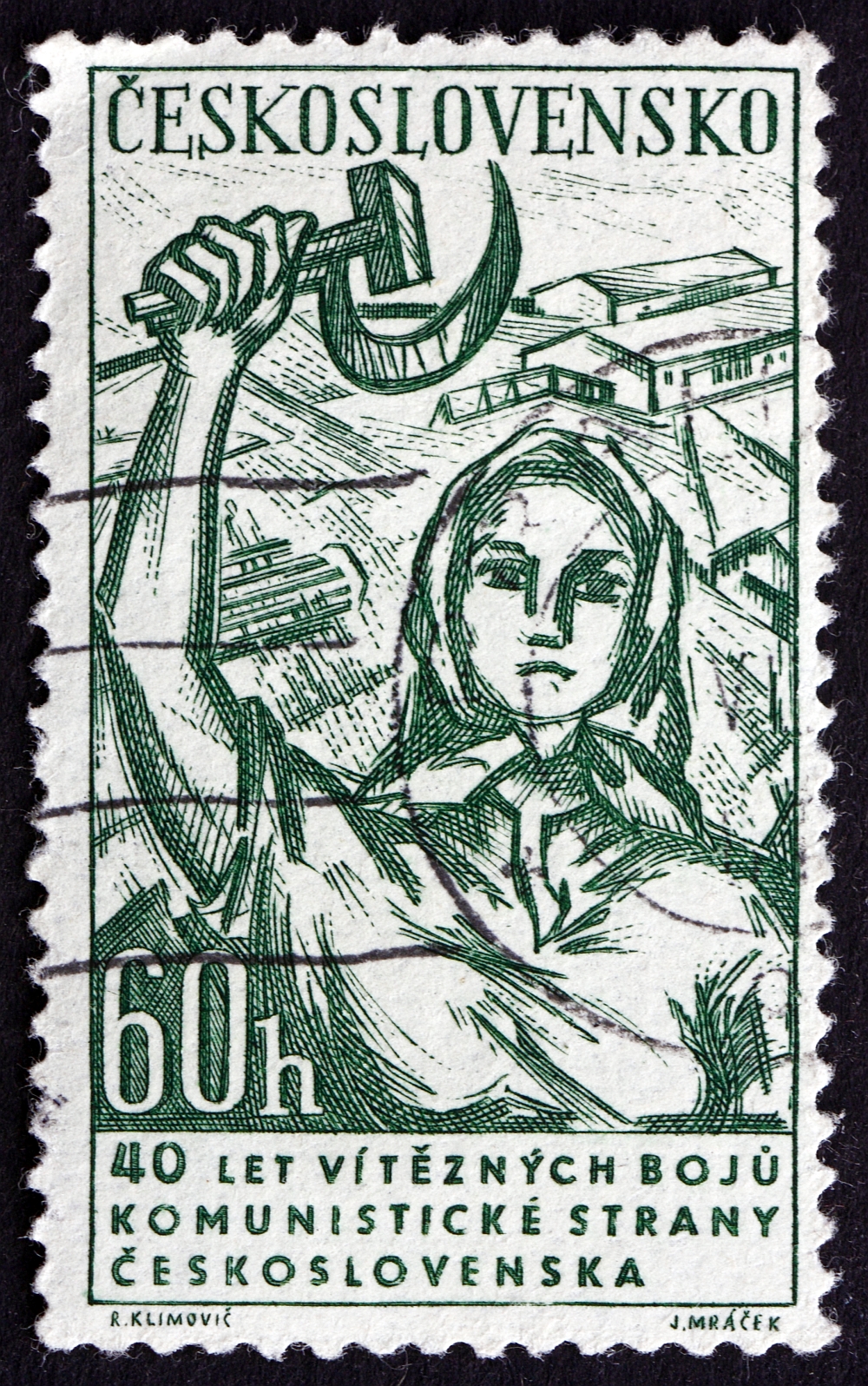 Under communism, some services were meant to become free first, which interestingly we see examples of today. They were meant to get things like free public transport in places, or free telecommunication lines. Of course the quality of those lines in those days wasn’t the highest. In principle it was great that you could call for free but in practice you couldn’t reach anyone! (laughs)
Under communism, some services were meant to become free first, which interestingly we see examples of today. They were meant to get things like free public transport in places, or free telecommunication lines. Of course the quality of those lines in those days wasn’t the highest. In principle it was great that you could call for free but in practice you couldn’t reach anyone! (laughs)
You teach students at the Master’s level – what surprises them the most?
Most already have earlier history classes or preparation, but what surprises them are certain parallels between the former communist countries and capitalism. If I am critical of something, it is that some of the students tend to see certain elements as absolute. Often they view the past perhaps too much through a political prism that can distort the picture. I think the way this period in history before 1989 is sometimes taught at high school is that it was completely horrible in all aspects, which is then at odds with the historic memory of their parents or grandparents. The aim is of course to present what happened as a warning so it will not be repeated but I think ultimately it can distort what really happened.
| Associate Professor Martin Franc |
| Martin Franc teaches Master's students at Charles University and is also based at the Masaryk Institute and Archive of the Czech Academy of Science. He has conducted extensive research into historic recipes and cuisine as well as the communist period in the former Czechoslovakia from 1948 - 1989. Besides his academic work, Franc is dedicated to popularising history, which he does as an amicable co-host in the online series Zmlsané dějiny (Tasty History or Hungry for History). |



